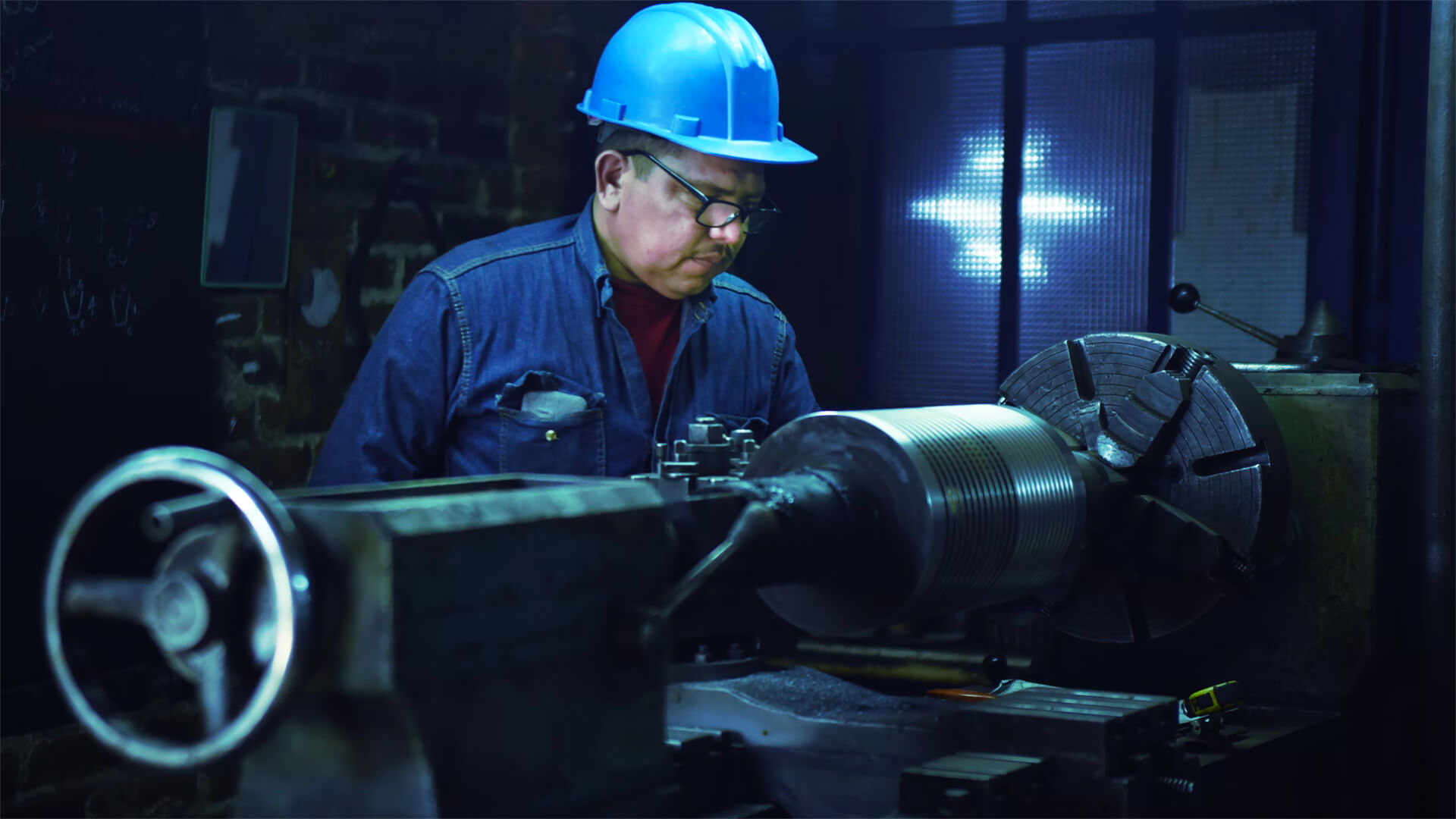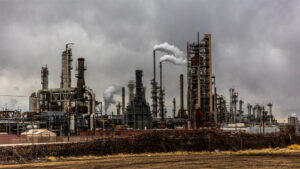The third piece of the shale revolution is all about timing. As the world shifts from globalized supply chains to more localized and secure means of production, utilizing cheaper energy sources and products will be essential.
The US has become the lowest-cost-highest-quality producer of intermediate materials, meaning much of the leg work to reshore supply chains and manufacturing has already been done. So what do we have to show for it?
Between agriculture, wiring, textiles and refined products, the US has shaken up dozens of industries and ramped up reshoring efforts. While industrial construction spending has grown significantly, we must maintain that growth to retain this newly added competitive advantage.
Reshaping the US manufacturing landscape is no easy feat, but access to cheap power and materials surely doesn’t hurt. With the foundation already laid, the US has a considerable leg up on other potential sources like China and the Persian Gulf.
Here at Zeihan On Geopolitics we select a single charity to sponsor. We have two criteria:
First, we look across the world and use our skill sets to identify where the needs are most acute. Second, we look for an institution with preexisting networks for both materials gathering and aid distribution. That way we know every cent of our donation is not simply going directly to where help is needed most, but our donations serve as a force multiplier for a system already in existence. Then we give what we can.
Today, our chosen charity is a group called Medshare, which provides emergency medical services to communities in need, with a very heavy emphasis on locations facing acute crises. Medshare operates right in the thick of it. Until future notice, every cent we earn from every book we sell in every format through every retailer is going to Medshare’s Ukraine fund.
And then there’s you.
Our newsletters and videologues are not only free, they will always be free. We also will never share your contact information with anyone. All we ask is that if you find one of our releases in any way useful, that you make a donation to Medshare. Over one third of Ukraine’s pre-war population has either been forced from their homes, kidnapped and shipped to Russia, or is trying to survive in occupied lands. This is our way to help who we can. Please, join us.
Transcript
Hey everyone. Peter Zeihan coming to you from Colorado where fall has firmly set in. Today we’re into the third part of a three part series on the shale revolution. The third shale revolution. Phase one was the production side. Phase two is processing and turning things into fuels and intermediate materials that we use in pretty much everything. And the third revolution is everything.
One of the truisms of the last 70 years of globalization has been that material production and manufacturing moves to wherever the competitive advantage happens to be, regardless of national identity. And that means that a lot of energy intensive industries moved out of the United States, particularly after 1973, because oil prices were cheaper or electricity high prices were cheaper, natural gas prices were were cheaper.
Or the processing process was less expensive, usually due to things like labor and environmental restrictions that we might have here that we don’t have in places like, say, China or Egypt that is in the process of unwinding that between globalization and a new appreciation for national security as a component of economic activity. More and more things are being reassured, and the shale revolution has gotten us a jump on this because the shale revolution has provided the United States with cheaper oil, cheaper natural gas, cheaper electricity and cheaper chemical products than anywhere else on the planet.
In part, that’s because natural gas is largely a byproduct here, but mostly it’s because the break even price and a lot of shale fields is now very, very low. And in fact, in the Permian Basin, which is the largest one in the United States, which is responsible for over a third of our overall energy production, it’s less than $11 a barrel on average compared to, say, places like Saudi Arabia, where it’s really cheap but still more than 20, or places like Russia, where with all of their Siberian work, you’re talking 30, 40 and even $50 a barrel.
So huge price advantage. In addition to the changing understandings of security. And what that means is the United States already this isn’t something that’s in the future, already is the lowest cost, highest quality, lowest pollution index producer of every one of the intermediate industrial materials that can come from energy products. And what we’re seeing now in this third phase of the shale revolution is those are being turned into manufactured goods.
And it’s really difficult to find a manufacturing subsector where this is not a game changer. Let me just hit a few of the highlights. First of all, agriculture, natural gas is turned into nitrogen based fertilizers. So where the U.S. is now the world’s largest producer and we’re seeing more and more of that value add chain come back. Even when the United States became the largest producer of natural gas and ethane, we were still shipping the intermediate products abroad, primarily to places like the Middle East or China for processing to finish fertilizer.
That is changing day by day for those who you think we should go organic help god. You are so bad at math. Organic fertilizers require multiple applications over the course of the year, which requires a lot more carbon input. In addition, they require about an order of magnitude more energy to produce in the first place. And if you’re going to be moving six, seven, eight, ten times as much of the stuff, you can imagine what the carbon footprint is for transport.
The same goes for pesticides. Most pesticides in the United States now are a once or twice and done for the season, as opposed to something you have to put on every few weeks in case you want to go organic. Another industry that’s seen a lightning change is wiring, which I know doesn’t sound very sexy until you realize you just go through your life and look at everything that uses electricity that includes your car.
Even if it’s not a an electric car. Anything with a wire has to have a protein. And those coatings are almost exclusively if you produce with some sort of petroleum derivative. Normally the wires are pulled from the metal close to the point of manufacture. So every industry that reassures is going to do more and more of that at home.
And since the coatings come from a petroleum derivative, the United States now has a huge economic advantage in addition to the security advantage over almost every other player. This means that whether it is automotive or electronics or semiconductor, there’s there’s a fairly large petroleum footprint that has nothing to do with energy. One of the things that folks forget is that we use petroleum for a lot more things than just burning.
And before 2015, about one fifth of the oil that the United States used was used in refined products that were not fuels. As we double the size of the industrial plant over the next several years, that number is probably going to at least double, especially if we continue down this path of ever more fuel efficient vehicles. More and more of the petroleum we use will be used for things where it’s not burned, which means that the carbon footprint is an order of magnitude less than it is for, say, gasoline.
Okay, what’s another one? Textiles. Not everything is cotton anymore. Any type of synthetic fabric. Like, you know, what I’m like or what I’m wearing right here. That is 100% of natural gas and petroleum derivative. And as such, that is the frontier in low carbon clothes making, because you don’t have to grow this. It’s just a byproduct of a natural form, of a natural, but of an industrial process where very little is actually emitted.
Polymers are all like that. Let’s see what semiconductors. I mean, obviously, the silicon is important and obviously you need dopey materials. But those dopey materials, as a rule, involve a lot of petroleum materials and there’s wiring throughout the entire process. In fact, it’s difficult to find a manufacturing sector where a petroleum derivative is not one of the top three or four components in it.
That’s true for automotive. That’s true for aerospace. That’s true for white goods. That’s true for heavy equipment. And now that all all of these materials are already being produced here, it’s really easing the pace at which the United States is reshoring industry from the rest of the world. So we have seen industrial construction spending, spending in the United States expand by roughly a factor of eight since just five years ago, and it’s almost tripled in just the last 18 months.
This is a good start. We need to do a lot more because we need to expand what we’ve done in these last five years by at least a factor of four and hold it there for at least another five years. And that will be inflationary and that will lead to labor disputes. And there’s a fierce competition among the American states as to where this stuff is going to go.
But the fact that the shale revolution has given us cheap power and cheap materials to do it at whatever scale we want. From a certain point of view, a lot of the hard stuff is already done. Everything else is a known quantity. Anyone else who wants to do this ultimately is going to have to import those materials, and there are only three real sources for them at scale.
China. The Persian Gulf. And here.







